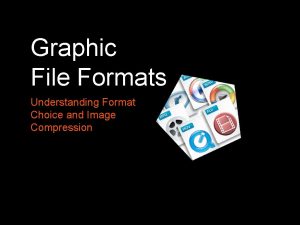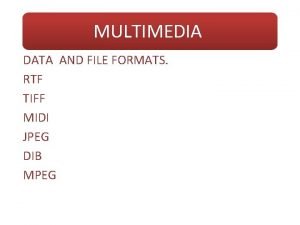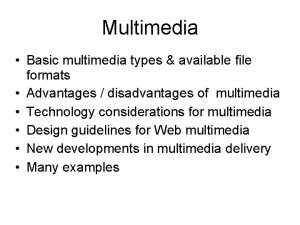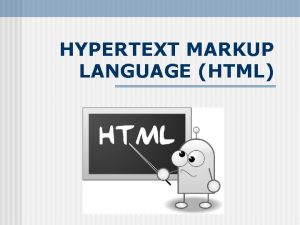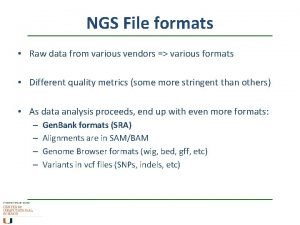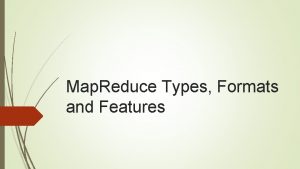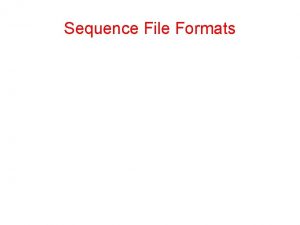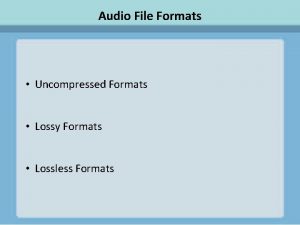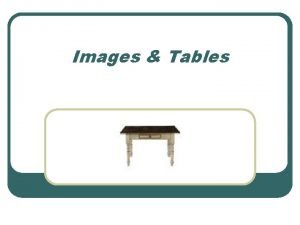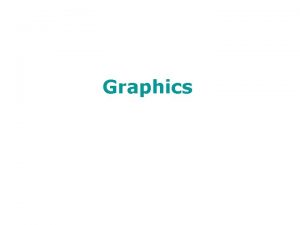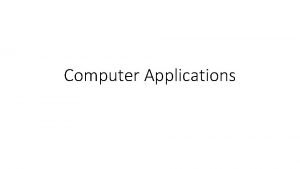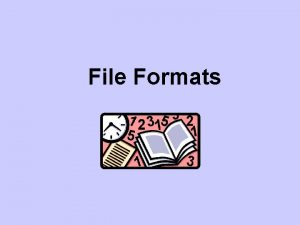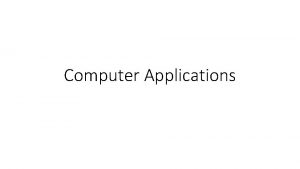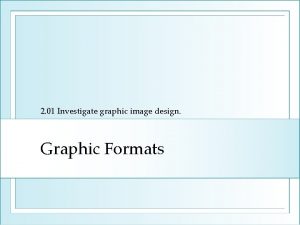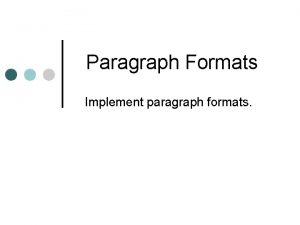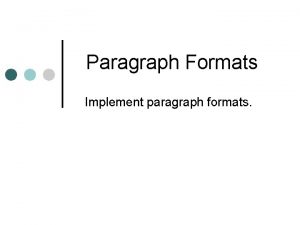Graphic File Formats Understanding Format Choice and Image













- Slides: 13

Graphic File Formats Understanding Format Choice and Image Compression

File Formats • All computer documents, or files, are packaged in different formats • The format is determined often by the files origin, such as a software program like Photoshop, or a device such as a digital camera • Graphic files such as a photo, video or artwork can be reduced in file size by using image compression formats

Lossy vs Lossless • Graphic image formats fall under 2 catagories of compression, Lossy and Lossless • With Lossy, image data is “lost” or reduced for smaller file sizes but can cause poor image quality. Can result in showing “compression artifacts” • Lossless retains image data for higher quality, but larger file sizes

Lossy vs Lossless Lossy showing compression artifacts (pixelisation)

Graphic Formats • TIF, JPG and GIF are the 3 most common formats for common activities such as printing, scanning and displaying images over the internet • Each format has its own advantages, disadvantages

File Format: TIF • Stands for Tagged Image Format • Common format for desktop publishing, print, photo and graphic design • Is a LOSSLESS file format. It retains image data for maximum image quality • Can result in larger file sizes, not fit for display over internet, is not browser compatible

File Format: JPG • Stands for Joint Photographers Expert Group • Created for digital photography and works best for photo content • Is a LOSSY format • Can reduce an image file size by 10: 1 without showing significant compression artifacts • The level of compression is adjustable

File Format: GIF • Stands for Graphics Interchange Format • Is best for graphics or images that have flat color or even tone, such as a cartoon • Reduces image size by “indexing” color from 3 channels to 1 • Is adjustable by changing color bit levels from 1 to 8 • Contains no DPI (Dots Per Inch) data for printing. Not a proper format for print

Which format to use?

Know Your Pixels • Tif and JPG are best for images with pixels that vary, these are called “contiguous pixels” • GIF is best for images with flat even tone, or “non-contiguous pixels”

Best format for Print?

Best format for Web?

Best format for Web?
 File-file yang dibuat oleh user pada jenis file di linux
File-file yang dibuat oleh user pada jenis file di linux Graphic image file
Graphic image file Windows movie maker file types
Windows movie maker file types Rtf in multimedia
Rtf in multimedia File formats in multimedia
File formats in multimedia Html
Html Ngs file formats
Ngs file formats Hadoop file formats
Hadoop file formats Ghost graphic story graphic and wayfinding
Ghost graphic story graphic and wayfinding Good choice or bad choice
Good choice or bad choice Splash graphic novel definition
Splash graphic novel definition Difference between logical file and physical file
Difference between logical file and physical file Map reduce types
Map reduce types Small group stages formats and culture
Small group stages formats and culture

